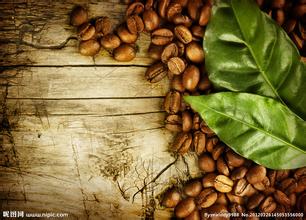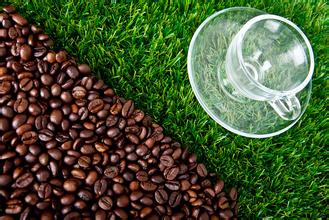Introduction to the fruit of coffee beans that have just been picked
Introduction to the fruit of coffee beans that have just been picked
It takes a lot of time and cost, and washing beans has a general pure charm, but because the time of harvesting and washing treatment can not be too long, time control is very important. in general, the washing factory can not be too far away from the coffee garden. it is best to peel the berries within a few hours. The washing method is to soak the berries in a large water tank, the withered inferior beans will float on the surface, these poor beans will be eliminated first, and the good berries will be pumped to the peel and pulp machine to remove the peel and pulp, and then the coffee beans will be fermented for about 1 day or 2 days, or even longer. Then, according to the degree of fermentation, choose the appropriate time to rinse the outer layer of fermented mucus, and the washed and screened beans need to be naturally dried by sunlight or dryer to prevent secondary fermentation. After completion, many farms are usually preserved in this state, and after receiving the order, the endocarp and silver peel are removed by a film remover. The less friction in the treatment process, the more aromatic substances can be left behind. Finally, a bean sieving machine is used to screen out discoloration, fermentation and other defective products. If it is an excellent product, it needs to be screened manually, although the machine can be roughly separated and processed, but if the beans are not ripe or overripe or other defective beans, they still need to be handled more well by hand.
Coffee trees can be divided into two main varieties: Arabica (Arabica) and Robusta (Robusta).
There are also some minor species, such as the Liberian species (Liberica) and the Alabasta species (Arabusta), but they are rare on the market.
Although Arabica and Roberta are widely cultivated, there are significant differences between them. Beans are different and tree species are not the same. Therefore, their use is also different. The world's production of Arabica beans is about 70%, while Robosta and others account for 30%.
Arabica
Arabica has a variety of tastes and acidity, high acidity, less caffeine, red color, less oil, can only grow above 800 meters above sea level, strong aroma, and a variety of different flavors, taste more pure, taste lubrication, chocolate, vanilla and nutty flavor. This kind of coffee is used in the best coffee shops in the world, and experts believe that the quality of this kind of coffee depends on the reasonable blending of bean seeds. Brazil is the largest growing country of Arabica beans, followed by Colombia and India.
Robusta
The flavor of Robusta is more bitter than that of Arabica, and its quality is much lower, so it is mostly used to make instant coffee. In general, the coffee sold in fast food restaurants mainly uses Robusta coffee beans as the material. Because it is made in Africa, most Africans drink robusta coffee. It has strong resistance to disease and high yield, accounting for less than 30% of the world's total coffee production. Robusta has low acidity, high caffeine content, brown color, thick fat and less flavor than Arabica, which can increase the taste and gelatinous taste of coffee.
Liberian coffee trees account for less than 5% of the world's output. Liberian coffee trees are suitable for planting in the lowlands, and the coffee beans produced are highly fragrant and bitter.

Important Notice :
前街咖啡 FrontStreet Coffee has moved to new addredd:
FrontStreet Coffee Address: 315,Donghua East Road,GuangZhou
Tel:020 38364473
- Prev

Which province in China is suitable for growing coffee beans-- introduction to the environmental conditions of planting
Which province in China is suitable for growing coffee beans-- introduction to the planting environment. At present, Yunnan coffee is mainly distributed in 11 prefectures and cities, such as Baoshan, Simao, Yuxi and Dehong. Among them, the quality of coffee in Baoshan and Simao area is the best. Lujiangba, a dry and hot valley, is a tropical treasure house in Baoshan. The average temperature in the dam is 21.5℃, the highest is 40.4 ℃, and there is almost no frost all the year round. The small grains of coffee cultivated here
- Next

How to taste the taste of espresso-
Introduction to espresso beans 1 take a sip of cold water to clean your mouth. 2. Drink coffee while it is hot. Because the tannins in coffee are easy to change during cooling, which makes the taste sour and affects the flavor of the coffee. Don't forget to take a sip of black coffee. Every cup of coffee you drink takes five years to blossom and bear fruit, harvested and roasted.
Related
- Guji coffee producing area of Guji, Ethiopia: Humbela, Shakiso, Wulaga
- What is the most expensive variety of Qiloso in BOP multi-variety group?
- How to store the coffee beans bought home?
- Why are Yemeni coffee beans so rare now?
- Ethiopian Sidamo all Red Fruit Sun Sun Santa Vini Coffee beans
- SOE is mostly sour? What does it mean? Is it a single bean? what's the difference between it and Italian blending?
- Is Italian coffee beans suitable for making hand-brewed coffee?
- How to choose coffee beans when making cold coffee? What kind of coffee beans are suitable for making cold coffee?
- Just entered the pit to make coffee, what kind of coffee beans should be chosen?
- Can only Japan buy real Blue Mountain Coffee? What are authentic Jamaican Blue Mountain coffee beans?

